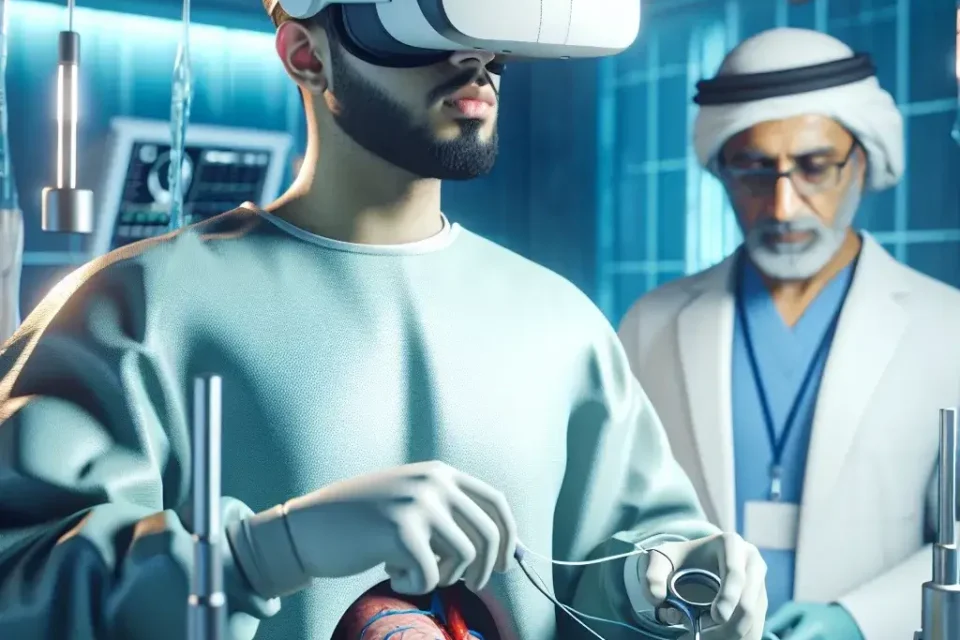The Revolutionary Impact of Virtual Reality in Medical Education
Virtual Reality (VR) technology has emerged as a groundbreaking tool in medical education, fundamentally transforming how future healthcare professionals are trained. This innovative approach to medical training offers unprecedented opportunities for hands-on experience in a risk-free environment, making it an invaluable asset in modern medical education.
Understanding VR Technology in Medical Training
Virtual Reality creates immersive, three-dimensional environments that allow medical students to interact with anatomical structures, practice surgical procedures, and experience patient scenarios in ways previously impossible. This technology combines sophisticated hardware with advanced software to deliver realistic, interactive medical training experiences.
Key Components of VR Medical Training Systems
- High-resolution VR headsets with precise motion tracking
- Haptic feedback devices for realistic tactile sensations
- Advanced medical simulation software
- 3D anatomical models and patient scenarios
- Interactive training modules and assessment tools
Benefits of VR in Medical Education
Enhanced Learning Experience
VR technology provides medical students with an unparalleled learning experience that goes beyond traditional textbooks and lectures. Students can visualize complex anatomical structures in three dimensions, making it easier to understand spatial relationships and physiological processes.
Risk-Free Practice Environment
One of the most significant advantages of VR in medical training is the ability to practice procedures without risk to real patients. Students can repeat procedures multiple times, make mistakes, and learn from them in a safe, controlled environment.
Standardized Training
VR enables consistent, standardized training experiences for all students, ensuring that everyone receives the same high-quality education regardless of their location or resources available at their institution.
Applications of VR in Medical Training
Anatomical Education
Virtual Reality transforms anatomical education by allowing students to:
- Explore detailed 3D models of human anatomy
- Dissect virtual cadavers with unlimited attempts
- View anatomical structures from multiple angles
- Understand complex anatomical relationships
Surgical Training
In surgical education, VR provides invaluable opportunities for practice and skill development:
- Simulation of various surgical procedures
- Practice of precise surgical techniques
- Emergency scenario training
- Team-based surgical simulations
Clinical Skills Development
VR helps students develop essential clinical skills through:
- Patient interaction scenarios
- Diagnostic practice
- Emergency response training
- Communication skills development
Impact on Learning Outcomes
Improved Retention and Understanding
Research shows that VR-based learning leads to better retention of medical knowledge and improved understanding of complex concepts. The immersive nature of VR creates memorable learning experiences that help students retain information more effectively.
Enhanced Practical Skills
Students trained using VR technology demonstrate better practical skills and confidence when performing actual procedures. The realistic simulations help bridge the gap between theoretical knowledge and practical application.
Challenges and Considerations
Technical Challenges
Implementation of VR in medical education faces several technical challenges:
- High initial costs for equipment and software
- Need for regular maintenance and updates
- Technical support requirements
- Integration with existing curriculum
Educational Considerations
Educators must consider various factors when implementing VR:
- Curriculum integration strategies
- Assessment methods for VR-based learning
- Balance between traditional and VR-based teaching
- Faculty training and adaptation
Future Prospects
Technological Advancements
The future of VR in medical education looks promising with anticipated developments in:
- More sophisticated haptic feedback systems
- Enhanced graphics and realism
- Integration with artificial intelligence
- Expanded application areas
Educational Evolution
The role of VR in medical education is expected to grow, with potential developments including:
- Personalized learning experiences
- Remote training capabilities
- International collaboration opportunities
- Continuous professional development applications
Conclusion
Virtual Reality has become an indispensable tool in medical education, offering unprecedented opportunities for hands-on training and experiential learning. As technology continues to advance, the role of VR in training medical students will only grow more significant, helping to prepare more competent and confident healthcare professionals for the future.
The integration of VR technology in medical education represents a significant step forward in how we train healthcare professionals. While challenges exist, the benefits and potential for improved learning outcomes make it an invaluable tool in modern medical education. As technology continues to evolve, VR will play an increasingly important role in shaping the future of medical training and healthcare delivery.

